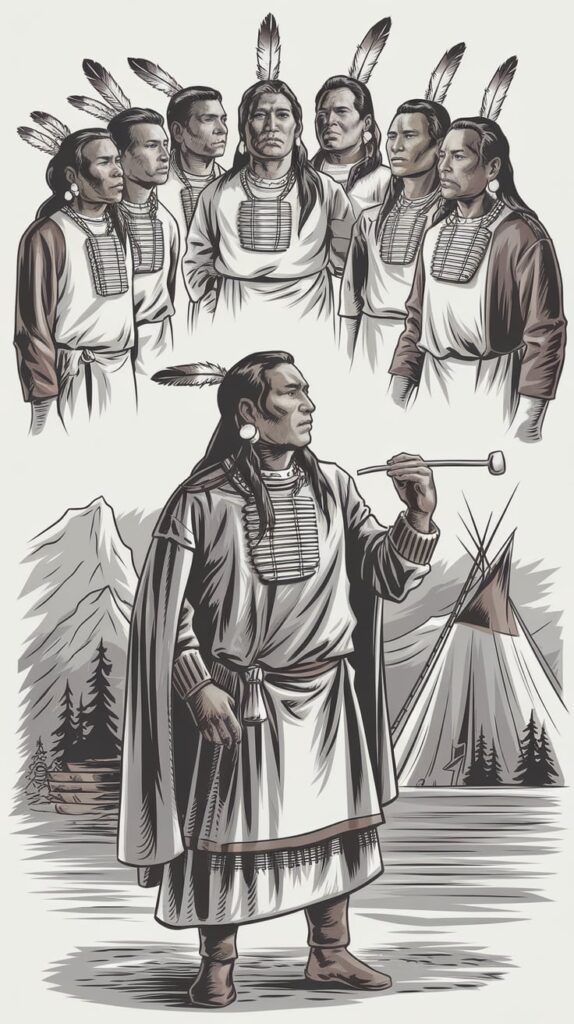Understanding how to pluralize words can often lead to confusion, especially when dealing with irregular nouns. A frequently asked question is: Plural of chief? Is it chiefs or chieves?
This article will dive deep into the meaning of the word “chief,” explore its plural form, and clarify the rules surrounding its usage in both singular and plural contexts.
Along the way, we will provide a wealth of examples, examine the word’s origin, and discuss synonyms. By the end, you will have a comprehensive understanding of how to use the plural form of “chief” correctly.

What Does “Chief” Mean?
The term “chief” refers to a leader or someone who holds a position of authority. It’s widely applicable across various contexts, such as business, military, and community leadership.
A chief executive officer (CEO) leads a company, while a police chief manages law enforcement operations. Essentially, the word “chief” signifies someone who is in charge or holds the most important position in a given context.
read more : Vicious vs Viscous – Grammar Beacon
Chief Singular and Plural
When discussing the word “chief,” it’s crucial to note its singular and plural forms. The singular form is chief, while the plural form is chiefs. The addition of “s” at the end of “chief” indicates that there is more than one leader.
This follows a standard rule in English, where most nouns become plural by adding -s or -es.
Why the Plural of “Chief” is “Chiefs” Not “Chieves”?
Many people wonder why the plural of “chief” is “chiefs” instead of “chieves.” The answer lies in the word’s etymology and the rules of English pluralization.
Etymology: The word “chief” has its origins in the Old French term “chef,” meaning head or leader. This, in turn, evolved from the Latin word “caput,” which also translates to head.
Understanding the history of the word helps explain its consistent meaning related to leadership.
Phonetic Rules: In English, nouns that end in a consonant sound, particularly “f,” typically form their plurals by adding -s. For example, while “wolf” becomes “wolves,”
plural of chief simply adds “s” to become “chiefs.” This adheres to the broader rule for pluralizing words that don’t fit into the more complex phonetic categories.
read more : LMAK Meaning – Grammar Beacon

Singular and Plural Usage in Sentences
To better illustrate how to use “chief” in both singular and plural forms, let’s look at some practical examples.
Singular Usage
Here are several examples that showcase the use of “chief” in its singular form:
- The chief of the department announced new policies that would affect all staff.
- Each chief plays a crucial role in decision-making processes.
- The chief executive officer presented the annual report during the meeting.
- The chief of police is responsible for maintaining law and order in the city.
- She was appointed as the chief advisor to the president, offering guidance on critical issues.
Plural Usage
Now, let’s examine how to use “chief” in its plural form:
- The department chiefs met to discuss the budget cuts and their implications.
- Several military branch chiefs attended the conference to share insights on strategy.
- The council chiefs collaborated on community initiatives aimed at improving public services.
- All chiefs must submit their reports by Friday to ensure timely reviews.
- The chiefs of staff organized the event successfully, ensuring every detail was covered.
These examples effectively illustrate the usage of the term “chief” in both singular and plural forms across different contexts.
Origin of “Chief”
Understanding the origin of the word “chief” can provide valuable insight into its meaning and usage. The etymology of “chief” reveals a rich history:
- Old French: The term is derived from “chef,” meaning leader or head.
- Latin: The root word “caput” translates to head, further emphasizing authority and leadership.
- Middle English: The term maintained its meaning related to leadership and authority throughout its evolution, showing consistency over time.
This historical context helps clarify why the plural form is “chiefs” and not “chieves.”
Synonyms for the Word “Chief”
The word “chief” has several synonyms that convey similar meanings. Here’s a list of common synonyms for “chief”:
- Leader
- Boss
- Director
- Principal
- Manager
- Commander
- Supervisor
- Head Honcho
- Foreman
- Head
Using these synonyms can enhance your writing and allow for a more varied expression while still conveying the intended meaning.
Understanding Pluralization in English
The English language has specific rules for pluralization that can sometimes feel arbitrary, but they follow certain patterns. Here’s a brief overview of the common rules of pluralization:
Regular Nouns
- Add -s: Most nouns simply add -s (e.g., cat → cats).
- Add -es: Nouns ending in -s, -x, -z, -sh, or -ch add -es (e.g., box → boxes).
Irregular Nouns
Some nouns change entirely when pluralized. Here are a few examples of these irregular nouns:
- Child → Children
- Foot → Feet
- Person → People
Contextual Variations
Certain nouns may have different plural forms based on cultural or contextual nuances. For example:
- Cactus → Cacti (following Latin rules)
- Crisis → Crises (another Latin-based irregular plural)
Flexible Word Usage
The English language is quite flexible, allowing for varied expressions based on context. This flexibility enables speakers to convey meaning more richly and accurately.
read more : Plural of Oasis: Exploring Its Meaning, Usage, and More – Grammar Beacon
Common Mistakes in Pluralization
One of the most frequent mistakes made when using the word “chief” is mistakenly pluralizing it as “chieves.” This error often stems from a misunderstanding of English phonetics and the rules governing pluralization.
Other Incorrect Plurals
Here are a few more examples of commonly misused plural forms that you might find useful:
- Cactus → Incorrect: Cactuses; Correct: Cacti
- Appendix → Incorrect: Appendixes; Correct: Appendices
- Thesis → Incorrect: Theses; Correct: Theses (same form for singular and plural)
Awareness of these common errors can help refine your language skills and enhance your communication.
Cultural Contexts and Examples
In various cultures, the term “chief” can represent different roles and responsibilities. For example, in some Indigenous cultures, a chief may serve as a traditional leader or representative of the community,
illustrating how the term extends beyond a mere job title.

Examples in Different Contexts
Here are a few examples to illustrate the versatility of the word “chief” across different cultural contexts:
- Business: A chief marketing officer drives brand strategy and growth initiatives for the company.
- Sports: The team’s chief strategist analyzed opponents’ plays to enhance performance during the season
These examples highlight the adaptability of the word “chief” in diverse environments, demonstrating its relevance across various sectors.
read more : What Does “Iicyify” Meaning? Guide with Examples – Grammar Beacon

How to Use “Chief” in Different Contexts
Using “chief” in sentences can vary significantly based on the context. Here’s a breakdown of how to effectively incorporate the term in different scenarios.
In Business Contexts
In the corporate world, titles often include “chief” to denote seniority. For instance:
- Chief Financial Officer (CFO) oversees financial operations, including budgeting and financial reporting.
- Chief Technology Officer (CTO) is responsible for technological advancements and innovation within the company.
- Chief Operating Officer (COO) manages daily operations and ensures that the business runs smoothly.
In Military Contexts
In military settings, the term often refers to high-ranking officials. For example:
- Chief of Staff coordinates operations and strategy among different branches.
- Fleet Chiefs manage naval forces, ensuring that missions are executed effectively and efficiently.
- Division Chiefs lead specific segments of military operations, focusing on their unique objectives.
In Community or Cultural Contexts
In community or cultural contexts, “chief” may refer to traditional leadership roles:
- Council chiefs often represent various groups within a municipality and facilitate communication between them and local government.
These examples demonstrate how to use the term “chief” accurately based on context.
High Key Phrase Density
When discussing the plural of “chief,” it’s essential to maintain high key phrase density throughout the article. Phrases like ” plural of chief?” and “chiefs or chieves?”
should be used consistently to reinforce the focus of the content, ensuring that readers grasp the primary topic.
Reiterating Key Phrases
plural of chief? The answer is chiefs.
Many people mistakenly ask, **”chiefsor chieves?”
The correct plural is chiefs.**
Understanding “chief” in both its singular and plural forms enriches your vocabulary and communication skills.
Maintaining this density will improve search engine optimization (SEO) and ensure that the article ranks well in search results.

Conclusion
In summary, the plural of “chief” is “chiefs.” This article has thoroughly explored the meaning of “chief,” its singular and plural forms, and the rules governing pluralization.
By understanding the etymology, usage in sentences, and synonyms, you can communicate more effectively and avoid common mistakes.
We’ve also discussed the cultural context of the term, demonstrating its versatility in various settings. Remember that mastery of language comes with practice and awareness of these nuances.
Keep exploring the intricacies of the English language, and you’ll enhance your communication skills significantly.
This exploration into plural of chief? has clarified any confusion surrounding the term, ensuring you are well-equipped to use it accurately. Whether you’re discussing leadership in business, military, or community contexts, knowing the correct usage of “chief” is essential.
By maintaining high key phrase density and utilizing varied examples, this article provides a comprehensive guide to understanding the pluralization of “chief.”
With this knowledge, you can confidently use the term in your conversations and writing, enhancing your overall language proficiency.
Furthermore, the importance of context cannot be overstated. Different environments may demand distinct interpretations or applications of the word “chief.” As language continues to evolve, staying aware of these shifts will further enrich your communication skills.
In conclusion, whether you’re a student, professional, or just someone looking to improve their language skills, understanding the pluralization of words like “chief” is fundamental.
It opens doors to clearer expression and deeper comprehension, both crucial for effective communication. So next time someone asks, “What is the plural of chief?” you’ll have the answer ready: chiefs.

James Logan is a seasoned blogger and language enthusiast behind Grammar Beacon. With years of experience in grammar and writing, James shares his expertise through insightful and engaging content. His passion for clear communication and linguistic precision shines in every post, making complex grammar concepts accessible and enjoyable for readers. Follow James for expert advice and tips to refine your writing skills.







